November is Child Safety and Protection Month, which is a good opportunity for parents and childcare workers to take a fresh look at making homes a safer place for toddlers and children of all ages.
What can you do to help create a safe home environment? We have gathered some important safety tips to help you protect your children from the tragedy of an accident.
Baby Gates
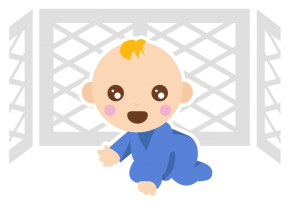 Have a baby in the family? Plan ahead and put safety gates in place. Once your baby starts crawling, stairs are a danger that can be avoided with the right type of child safety gate. The door opening (or stairway) you have in your home will require a specific size and type of gate. Read the specs carefully before you buy, and install the gates exactly as the manufacturer directs.
Have a baby in the family? Plan ahead and put safety gates in place. Once your baby starts crawling, stairs are a danger that can be avoided with the right type of child safety gate. The door opening (or stairway) you have in your home will require a specific size and type of gate. Read the specs carefully before you buy, and install the gates exactly as the manufacturer directs.
Choking Dangers
 Children can choke on many types of foods and small items. Babies have a reflex that goes hand to mouth, and they will put virtually anything into their mouths. Keep all smaller items out of reach, including toys and toy parts. Keep floors and tables clear of small items of any type. Never leave your baby unattended – even a few minutes could be critical if he or she chokes on something. Certain foods increase the risk of choking as well, including hot dogs, candies and nuts. These items are the underlying reason for 40 percent of choking deaths in children. All foods should be cut into small pieces your child can easily swallow.
Children can choke on many types of foods and small items. Babies have a reflex that goes hand to mouth, and they will put virtually anything into their mouths. Keep all smaller items out of reach, including toys and toy parts. Keep floors and tables clear of small items of any type. Never leave your baby unattended – even a few minutes could be critical if he or she chokes on something. Certain foods increase the risk of choking as well, including hot dogs, candies and nuts. These items are the underlying reason for 40 percent of choking deaths in children. All foods should be cut into small pieces your child can easily swallow.
Electrical Outlets
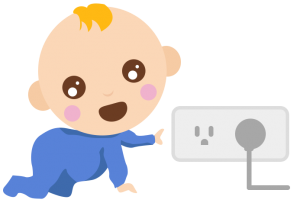 Babies, toddlers and young children are curious about everything – including electrical outlets. All outlets must be protected with covers at all times. The danger of a serious injury can be avoided if you take this important safety measure.
Babies, toddlers and young children are curious about everything – including electrical outlets. All outlets must be protected with covers at all times. The danger of a serious injury can be avoided if you take this important safety measure.
Car Seats
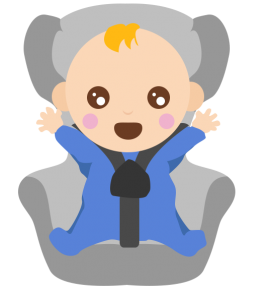 Use a car seat that meets safety standards. If you have a used child car seat, check for safety recalls before you use it. Some car seats, after being released onto the market, were found to have manufacturing defects or design defects. Don’t take a chance. You can get information on child car seat recalls at safercar.gov and at safekids.org. Always use the car seat as directed, in the back seat, never in the front (unless your vehicle doesn’t have a back seat). If your baby is crying or needs help, do the right thing and pull over to deal with the problem rather than trying to handle it while operating your vehicle.
Use a car seat that meets safety standards. If you have a used child car seat, check for safety recalls before you use it. Some car seats, after being released onto the market, were found to have manufacturing defects or design defects. Don’t take a chance. You can get information on child car seat recalls at safercar.gov and at safekids.org. Always use the car seat as directed, in the back seat, never in the front (unless your vehicle doesn’t have a back seat). If your baby is crying or needs help, do the right thing and pull over to deal with the problem rather than trying to handle it while operating your vehicle.
Medications and Poisonous Substances
 All medications carry the risk of danger if consumed by a child, including the most benign, such as aspirin. Some types of child medications are flavored, and children like the candy taste. Adult medications can be so powerful that a dose could cause serious injury or death for a child. Children are at risk if there is a pill bottle, medication or any substance, including cleaning supplies, within reach, either by walking or crawling. Have medications on your nightstand? Put them away. Put latches on all cupboards a child can reach.
All medications carry the risk of danger if consumed by a child, including the most benign, such as aspirin. Some types of child medications are flavored, and children like the candy taste. Adult medications can be so powerful that a dose could cause serious injury or death for a child. Children are at risk if there is a pill bottle, medication or any substance, including cleaning supplies, within reach, either by walking or crawling. Have medications on your nightstand? Put them away. Put latches on all cupboards a child can reach.
Water: Pools and Tubs
 It takes very little water for a young child to drown. A bathtub, bucket or anything that holds water poses a risk. Pool gates and fences must be latched and locked. If you are visiting a home with a pool, keep your children in your line of sight at all times.
It takes very little water for a young child to drown. A bathtub, bucket or anything that holds water poses a risk. Pool gates and fences must be latched and locked. If you are visiting a home with a pool, keep your children in your line of sight at all times.
Child Injuries: The Shocking Statistics
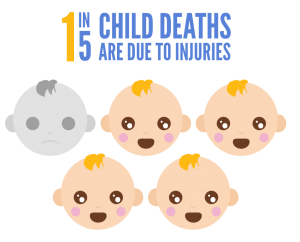 The Centers for Disease Control and Prevention (CDC) reports some frightening statistics about child injuries – many of which were preventable:
The Centers for Disease Control and Prevention (CDC) reports some frightening statistics about child injuries – many of which were preventable:
- One child dies every hour from an injury.
- About 1 in 5 child deaths are due to injuries.
- Every 4 seconds, a child is treated in an emergency room.
A CDC report regarding causes of death in the United States reveals that unintentional injuries (accidental deaths) are the reason behind a very high percentage of child deaths, particularly for children ages 1 to 14.
| Child deaths 2012 | All causes | Unintentional injuries | Death from unintentional injuries |
|---|---|---|---|
| Under 1 year | 24,586 | 1,110 | 4.5 percent |
| 1 – 4 years | 4,316 | 1,394 | 32 percent |
| 5 – 14 years | 5,279 | 1,643 | 31 percent |
Take Advantage of Child Safety & Protection Month
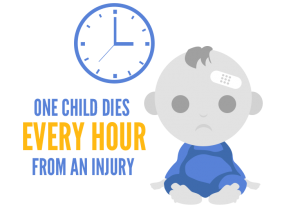 You can take this month to focus on making your home environment safer for children. Parents, grandparents, aunts, uncles and any person who babysits or watches your children should get involved. It is advised that any caregiver for children is trained in CPR. Supervision of your children is the key in keeping them safe. We can all take measures to avoid the tragedy of an accidental injury or death.
You can take this month to focus on making your home environment safer for children. Parents, grandparents, aunts, uncles and any person who babysits or watches your children should get involved. It is advised that any caregiver for children is trained in CPR. Supervision of your children is the key in keeping them safe. We can all take measures to avoid the tragedy of an accidental injury or death.
Sources:
- CDC – Vital Signs: Child Injury
- CDC – Health, United States, 2013
- Safe Kids Worldwide – Product Recalls
- Parent Guide News – November Brings Child Safety & Prevention Month

Leave a Reply